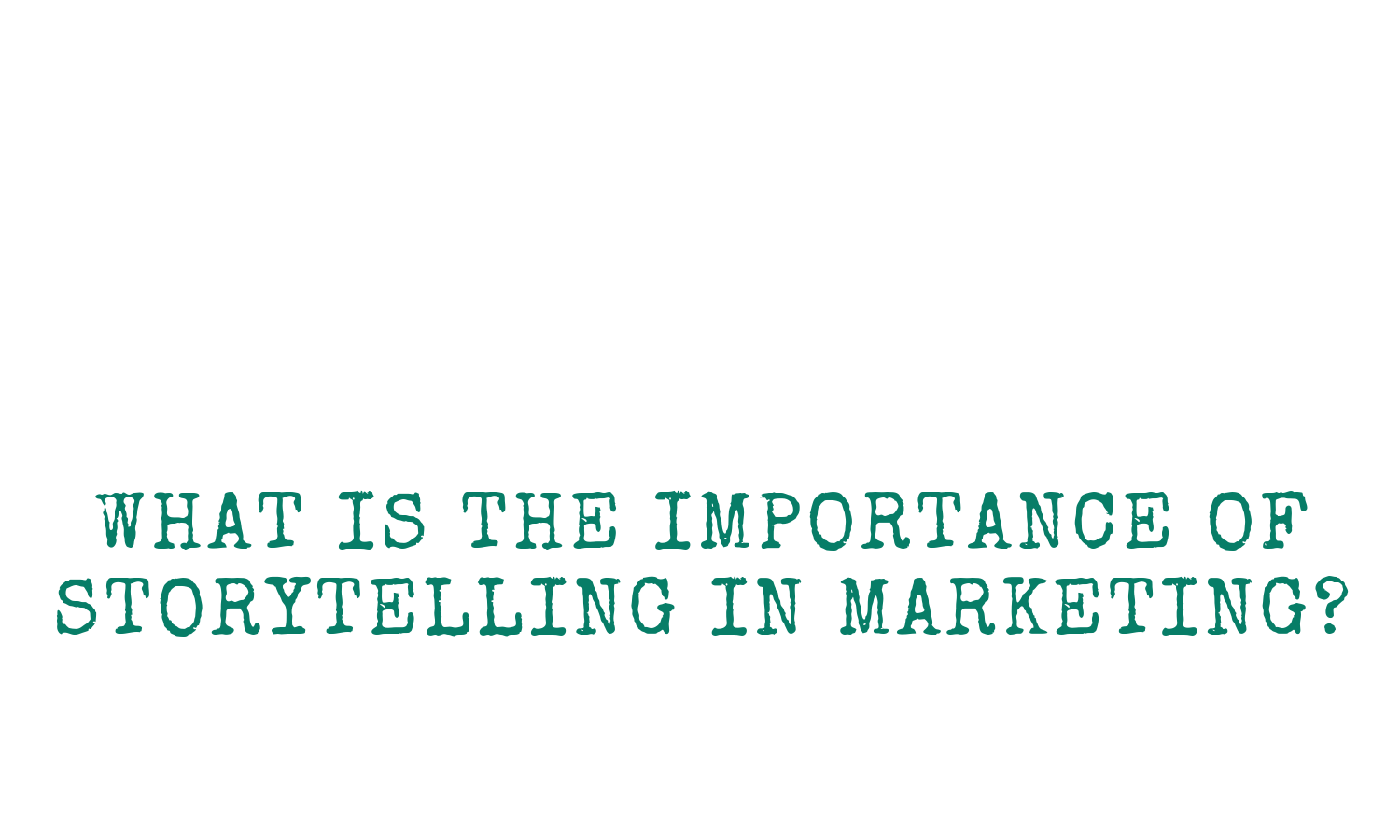Storyteller Marketing—5 Things to Know
Storyteller marketing is an approach to reaching your audience that relies on stories to form genuine connections. No gimmicks. No tricks. Just honest communication. The thing is, many people believe they “hate writing” or “can’t write a good story”, and that just isn’t true. But there are some truths relative to storyteller marketing, and if you’re willing, we’d like to share five things you need to know about storyteller marketing to make it work for you.
Writing is Hard—Telling Great Stories Takes Practice
Margaret Atwood (The Handmaid’s Tale) says that writers only learn to write by writing, which is completely obvious and yet so many believe that writing or being a great writer is some kind of magical gift, like finding our you’re a wizard and getting to move out from under the cupboard.
While a predilection for writing may be stronger for some than others, that doesn’t mean that with practice, you, too can’t be a solid storyteller who can write your brand story concisely and excitingly. It all starts with putting the words on the page.
Storyteller marketing truth #1: Write and revise, revise, revise, and eventually, you will thrive.
Great Stories are Born from Inspiration
Make time to decompress. It helps your mind loosen up and for your creative side to flow. Photo credit: Imani Clovis
While great writers write all of the time, marketing stories need to come from a place of inspiration, a place of passion. To arrive there, you need to have a clear sense of yourself and of what your goals are. You also need to understand some of the fundamentals of storytelling and what kinds of stories you should tell (i.e., your origin story, identifying how you solve your audience’s problem story, etc.).
Beyond that, look at how other brands are telling their story. Think about your brand. Take notes and keep a journal of your ideas. Mull them over while you cook, walk, drive, garden…whatever you do to clear your headspace and free your mind for storytelling inspiration to flow.
Storyteller marketing truth #2: You can improve your storyteller marketing by being observant and reflective.
Storyteller Marketing Reveals Solutions
Often when we hear “storyteller” we think of “once upon a time”, but in the context of marketing, storyteller refers to structure, to the story’s arc. The arc has a clear beginning, middle, and end. There’s a problem, an action, and a resolution. It doesn’t have to be complex. For example:
Janet needs help telling her brand story. Janet calls The Storyteller Agency, and they help her become a storyteller marketing hero. Janet gets so much new business that she has to hire an assistant and give herself a pay raise. (Don’t you hate it when that happens?)
Overlooking that bit of shameless self-promotion, keep in mind a few things when you’re telling a story to reveal solutions. One is that you need to understand what your audience’s realend goal is. They might say they want to tell better stories or that they want to build their audience, but that’s not really the end goal. The real goal is that they want to boost their revenue, grow their business, have more life security, retire to the beach, etc.
Storyteller marketing truth #3: When you understand what your audience really wants, you can use stories to clearly show how you provide solutions to their problems.
Emotion and Data Go Hand–in–Hand in Storyteller Marketing
Another big misconception about storytelling is that it’s all emotional. That simply isn’t so. Numbers can make a huge difference in your story’s impact. Used sparingly and at the right time in the story, data can also make your story more memorable.
Pretend your goal is to raise money for an animal charity. While “please help abused animals because it’s the right thing to do” is not an inaccurate statement, it doesn’t resonate the same as telling your audience that with donations received in 2018, your organization rescued and relocated 50 puppies from puppy mills in your community.
Images and videos pack a powerful punch when it comes to storyteller marketing. Photo credit: Lydia Torrey
Storyteller marketing truth #4: Data can enhance your story’s emotional impact.
Stories Can & Should be Expressed Visually
Lastly, while words are wonderful, you can and should use visuals (images, videos, voice, etc.) to tell or to enhance the telling of your story. For example, in the above example about puppy mills, imagine how much more powerful that short story about rescuing 50 puppies would be if there was a photo of one or some of the puppies included? Now imagine a video that showed the organization’s members saving the sad puppies, nurturing them to health, and then finding them forever homes with eager, loving families? Just the thought of it makes us want to go rescue a puppy. The point is, visuals are an essential part of storyteller marketing and should not be overlooked.
Storyteller marketing truth #5: Visuals pack a punch in your storyteller marketing strategy.
Truth number six is simply that storyteller marketing is both effective and is for everyone. Great storyteller marketing relies on introspection, study, and practice, but you can do it. We are here to help. The Storyteller Agency specializes storyteller marketing. Click here to contact us, and let’s start telling your best stories.









